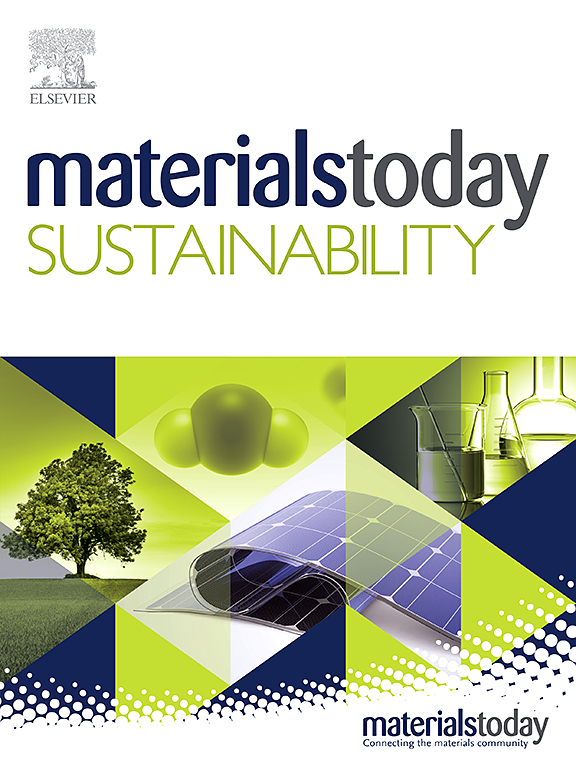催化反应利用生物质衍生5-羟甲基糠醛的策略:途径和机制
IF 7.1
3区 材料科学
Q1 GREEN & SUSTAINABLE SCIENCE & TECHNOLOGY
引用次数: 0
摘要
生物质精炼厂,通过化学/生物工程过程生产可取代原始石油衍生化学品的化学品,被视为实现环境友好型生产和可持续性的可再生能源。在各种生物质衍生化学品中,5-羟甲基糠醛(5-HMF)是由葡萄糖异构化脱水果糖产生的,作为平台化学品,在制药、生物塑料、生物燃料和聚酯等增值产品中具有显著的应用潜力。由5-羟甲基糠醛产生的代表性化学品是通过氧化反应产生的2,5-二甲酰呋喃和2,5-呋喃二羧酸,以及通过还原反应产生的2,5-二(羟甲基)呋喃。这些氧化/还原产物可以潜在地用作聚合物玻璃体的增值化学品,以及生物塑料单体,以取代原始的聚对苯二甲酸乙二醇酯,聚氨酯和聚酯。本文介绍了近年来利用多相催化剂和电催化剂将5-羟甲基糠醛催化转化为氧化/还原产物的研究进展,并详细介绍了5-羟甲基糠醛活化的催化机理。讨论了目前面临的挑战和未来的前景,以促进5-羟甲基糠醛氧化/还原为有用化学品的进一步研究和催化剂设计。本文章由计算机程序翻译,如有差异,请以英文原文为准。

Strategies on utilizing biomass derived 5-hydroxymethylfufural by catalytic reactions: Pathways and mechanisms
Biomass refinery, produces chemicals that can replace pristine petroleum-derived chemicals through chemical/biological engineering processes, and is regarded as a renewable energy source for achieving environmental-friendly production and sustainability. Among various kinds of biomass derived chemicals, 5-hydroxymethylfufural (5-HMF), produced by the dehydration of fructose via glucose isomerization, has remarkable potential as a platform chemical for utilization in value-added products such as pharmaceutical, bio plastics, bio fuels and polyesters. Representative chemicals produced from 5-HMF are 2,5-diformylfuran and 2,5-furandicarboxylic acid, which are generated via oxidation reactions, and 2,5-bis(hydroxymethyl)furan which are generated via a reduction reaction. Theses oxidation/reduction products can potentially be used as value-added chemicals for polymer vitrimers, and in bioplastic monomers for replacing pristine polyethylene terephthalate, polyurethane and polyesters. Herein, the recent achievements in the catalytic conversion of 5-HMF to oxidation/reduction products using heterogeneous catalysts and electrocatalysts are presented, including the detailed catalytic mechanisms of 5-HMF valorization. The current challenges and future perspectives are discussed to prompt further studies and catalyst design for the oxidation/reduction of 5-HMF to useful chemicals.
求助全文
通过发布文献求助,成功后即可免费获取论文全文。
去求助
来源期刊

Materials Today Sustainability
Multiple-
CiteScore
5.80
自引率
6.40%
发文量
174
审稿时长
32 days
期刊介绍:
Materials Today Sustainability is a multi-disciplinary journal covering all aspects of sustainability through materials science.
With a rapidly increasing population with growing demands, materials science has emerged as a critical discipline toward protecting of the environment and ensuring the long term survival of future generations.
 求助内容:
求助内容: 应助结果提醒方式:
应助结果提醒方式:


